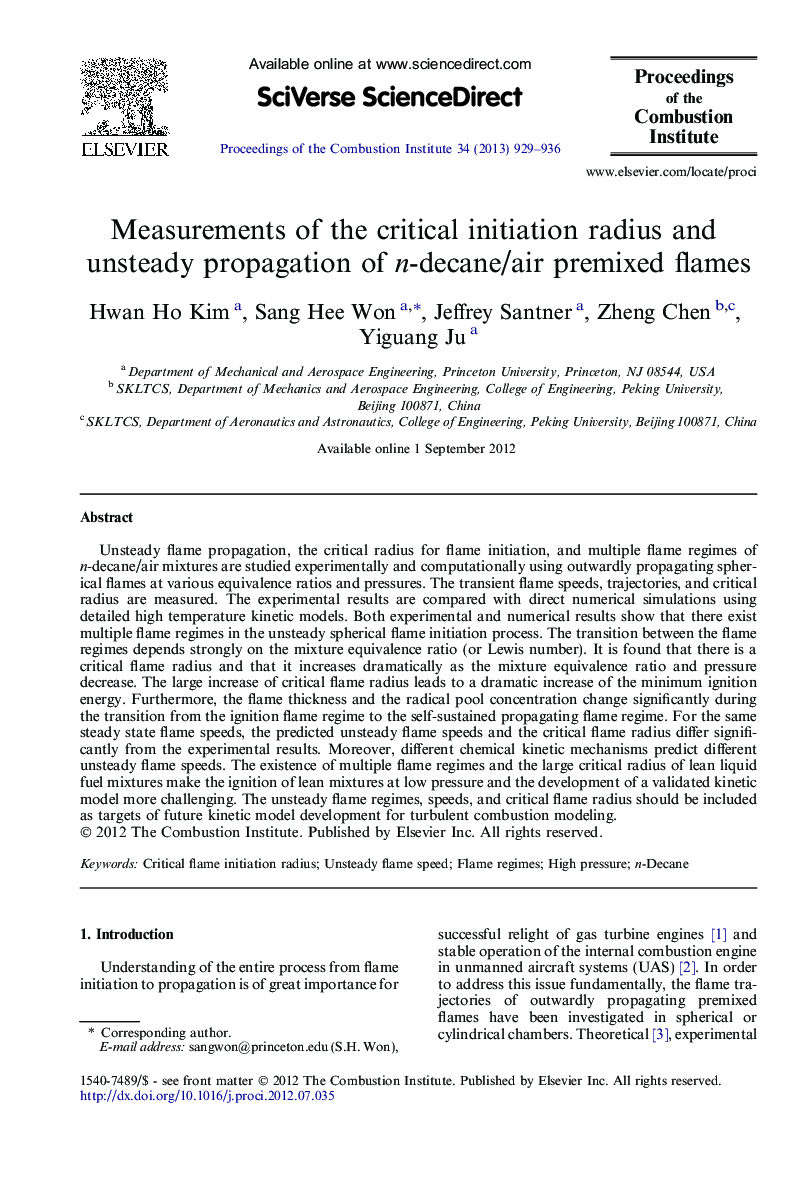| Article ID | Journal | Published Year | Pages | File Type |
|---|---|---|---|---|
| 241201 | Proceedings of the Combustion Institute | 2013 | 8 Pages |
Unsteady flame propagation, the critical radius for flame initiation, and multiple flame regimes of n-decane/air mixtures are studied experimentally and computationally using outwardly propagating spherical flames at various equivalence ratios and pressures. The transient flame speeds, trajectories, and critical radius are measured. The experimental results are compared with direct numerical simulations using detailed high temperature kinetic models. Both experimental and numerical results show that there exist multiple flame regimes in the unsteady spherical flame initiation process. The transition between the flame regimes depends strongly on the mixture equivalence ratio (or Lewis number). It is found that there is a critical flame radius and that it increases dramatically as the mixture equivalence ratio and pressure decrease. The large increase of critical flame radius leads to a dramatic increase of the minimum ignition energy. Furthermore, the flame thickness and the radical pool concentration change significantly during the transition from the ignition flame regime to the self-sustained propagating flame regime. For the same steady state flame speeds, the predicted unsteady flame speeds and the critical flame radius differ significantly from the experimental results. Moreover, different chemical kinetic mechanisms predict different unsteady flame speeds. The existence of multiple flame regimes and the large critical radius of lean liquid fuel mixtures make the ignition of lean mixtures at low pressure and the development of a validated kinetic model more challenging. The unsteady flame regimes, speeds, and critical flame radius should be included as targets of future kinetic model development for turbulent combustion modeling.
